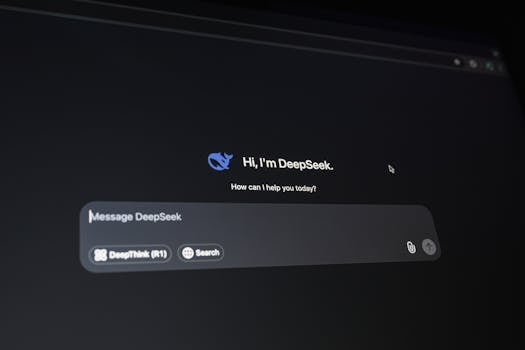In recent years, artificial intelligence (AI) has rapidly advanced and become a fundamental part of modern technology. As a result, applications are also transforming, using generative AI to enhance their functionality. This evolution promises to transform the way we interact with devices, offering more personalized and intuitive experiences.
Generative AI app development represents a new era in technology where machines not only perform tasks but also create original content. This innovation is shaping the future of digital engagement, providing new options and approaches to solving complex problems.
As the demand for innovative solutions increases, understanding the trends and impacts of generative AI on the application landscape becomes essential. This article will examine the future of generative AI applications and their transformative potential.
What is Generative Artificial Intelligence?
Generative AI refers to algorithms that can create new data from existing patterns. This includes text, images, sounds, and more. This type of AI learns from large data sets, allowing it to produce content that mimics reality.
Generative AI models, such as GPT (Generative Pre-trained Transformer), are widely used to generate coherent text. This applies to both chatbots and the creation of articles or stories. This makes this technology a valuable tool for app developers.
Additionally, generative AI can create images and videos, resulting in a variety of applications in the entertainment and design industries. Applications that utilize this technology provide an innovative way to create and consume content.
These advances have presented new possibilities for companies and startups looking to stand out in the market. With increasing personalization, applications become more relevant to users. Thus, generative AI is not just a technology, but a revolution.
Therefore, understanding this concept is vital to anticipate the necessary changes and adaptations. Developers and users must be aware of the opportunities and challenges that accompany this evolution.
Generative AI Applications in Apps
Generative AI is already having a significant impact across a range of application categories. From healthcare to entertainment, the technology is versatile and can improve user experience. One notable example is virtual assistant applications.
Additionally, graphic design tools use AI to automatically generate images and layouts, making designers’ work easier. This saves time and resources, allowing for greater creativity and innovation.
In gaming, generative AI can create scenarios, characters, and even entire storylines, providing richer and more diverse gameplay. This transforms the way developers approach game creation.
More importantly, personalization in e-commerce apps has benefited from generative AI. It enables more accurate recommendations by tailoring the shopping experience to users’ preferences. This results in higher satisfaction and engagement.
In short, the applications of generative AI are broad and impact various industries. Therefore, this trend is expected to continue to expand, offering new solutions and experiences to users.
Benefits of Generative AI for Developers
App developers are reaping numerous benefits from generative AI. One of the main benefits is the efficiency of the development process. This technology accelerates the creation of innovative solutions.
Additionally, generative AI allows for rapid testing of ideas. With the ability to prototype and simulate experiences, developers can refine their products more effectively. This reduces time to market.
Another benefit is cost minimization. By automating repetitive or complex tasks, developers can focus on more strategic aspects of app creation. This improves resource allocation.
Collaboration between teams is also facilitated with generative AI, enabling a more cohesive workflow. The technology serves as a bridge to bring together different disciplines in product development.
Finally, the use of generative AI supports continuous innovation. With the ability to generate new ideas and solutions, developers are encouraged to explore new frontiers in application design.
Challenges in Using Generative AI
While generative AI offers many benefits, it also brings challenges that cannot be ignored. One of the main ones is the issue of ethics in content creation. Responsibility for what is generated needs to be discussed.
Furthermore, reliance on generative AI can lead to reduced human creativity. If developers become too dependent on this technology, originality can be compromised. It’s a delicate balance.
The costs of implementing generative AI in applications can also be significant. It requires investments in infrastructure and technology that not all companies are willing or able to afford.
Another challenge is ensuring the quality of the content generated. Not all AI production meets expected standards, requiring human filtering and constant review to avoid errors or inappropriate content.
Finally, the security and privacy of the data generated are growing concerns. Applications that use generative AI must ensure that users’ personal information is protected and handled ethically.
The Impact of Generative AI on User Experience
Implementing generative AI has a profound impact on user experience. This translates into more personalized and relevant interactions, increasing customer satisfaction. Personalization is at the heart of this transformation.
Additionally, AI enables faster response to user needs. This translates into chatbots that can resolve issues instantly and services that adapt in real time to individual preferences.
Another important dimension is the creation of dynamic content. Applications that use generative AI can offer frequent updates and new features. This way, users always feel engaged and interested.
The ability to generate solutions on demand also transforms interaction. Product presentations, recommendations, and even entertainment content become more relevant with this intelligent approach.
Therefore, the impact of generative AI on user experience is undeniable and promising. This technology is reshaping how we interact with applications and how they evolve to meet our needs.
Future Trends for Apps and Generative AI
The future of generative AI applications is bright and full of potential. New features and integrations are expected to emerge as the technology advances. This promises to further expand current capabilities.
A growing trend is the greater democratization of technology. Generative AI tools should become more accessible, allowing small startups to compete with large companies. This will spur innovation.
Furthermore, collaboration between different industries is expected to increase. Generative AI applications may well bridge areas such as healthcare, education, and entertainment. This multidisciplinarity will lead to even more innovative solutions.
Integration with augmented reality (AR) and virtual reality (VR) is also expected. This combination can enhance user immersion and create even more engaging and personalized experiences.
Finally, ethics and regulation around the use of generative AI will likely become a critical topic. As the technology evolves, clear guidelines will be needed to ensure responsible use.
Conclusion
The future of generative AI applications is constantly changing, shaped by innovations and challenges. The opportunities are vast and the ability to deliver personalized experiences is revolutionary. As such, both developers and consumers must adapt and evolve alongside this technology.
The rapid evolution of AI will generate new applications that can make everyone’s lives easier. Therefore, understanding this evolution is vital to making the most of these advances over time.
Commitment to ethics, creativity and innovation will be essential. Only then will we be able to make the most of the promises of generative artificial intelligence in the world of applications.
Trending Topics

Online Bible: Best Apps to Read the Bible
Discover the best online Bible apps with features that make it easier to study and access the Word of God.
Keep ReadingYou may also like

Online Pregnancy Tracking Apps: What You Need to Know
Pregnancy monitoring apps: Learn how they work and discover the best apps, as well as tips for using them safely.
Keep Reading


